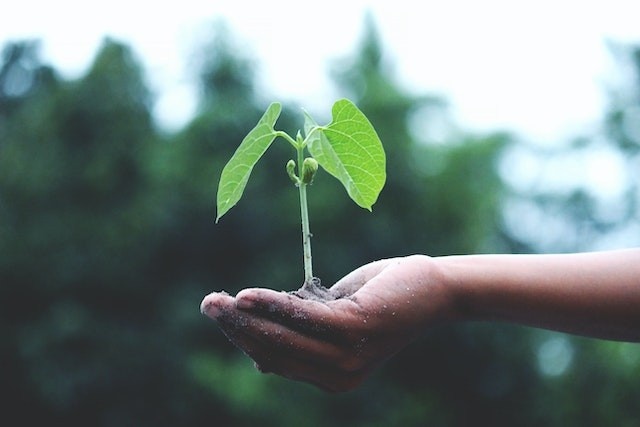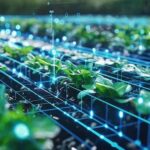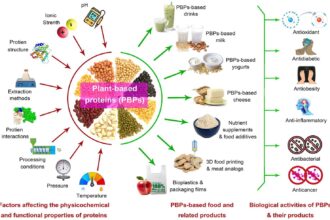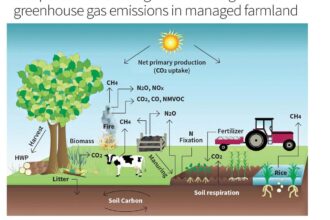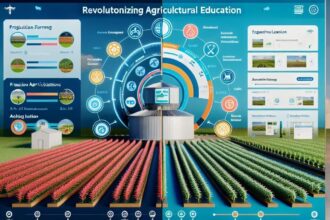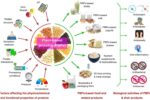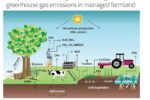Introduction
Agriculture has always been the backbone of human civilization. From the fertile river valleys of Mesopotamia to the modern agricultural hubs of Punjab, California, and Brazil, farming has shaped economies, cultures, and societies. Yet, as we step into 2025, one fact is crystal clear: our current model of agriculture is unsustainable.
Conventional farming practices that rely heavily on chemical fertilizers, pesticides, and monocropping have led to a series of challenges:
- Depleted soil fertility
- Loss of biodiversity
- Groundwater contamination
- Climate change impacts
- Rising input costs for farmers
The world population is expected to surpass 8.5 billion by 2030 (UN data), and global food demand will increase by at least 35%–50% by 2050. Meeting this demand without destroying our natural resources is the greatest challenge of our time.
This is where eco-friendly farming methods, composting, and soil health management come into play. They offer a pathway to boost productivity, enhance soil fertility, cut costs, and reduce environmental damage. This blog will explore these sustainable methods in depth, using real-world examples, case studies, and actionable techniques that farmers and policymakers can adopt.
Understanding Eco-Friendly Farming
What is Eco-Friendly Farming?
Eco-friendly farming, often called sustainable agriculture or climate-smart farming, refers to agricultural practices that:
- Preserve natural resources (soil, water, biodiversity)
- Minimize environmental impact
- Improve resilience to climate change
- Ensure profitability for farmers and food security for consumers
It is not about rejecting modern technology but about integrating science, tradition, and sustainability.
Conventional vs. Sustainable Farming
| Aspect | Conventional Farming | Eco-Friendly Farming |
|---|---|---|
| Fertilizers | Chemical-based | Organic, bio-fertilizers, compost |
| Pest Control | Synthetic pesticides | Integrated Pest Management (IPM), natural predators |
| Soil Health | Often ignored | Central focus (living soil as an ecosystem) |
| Energy Use | Fossil fuel dependent | Renewable sources (solar, wind, biogas) |
| Crops | Monocropping | Crop rotation, intercropping, polyculture |
Benefits of Eco-Friendly Farming
- Economic: Reduced input costs, premium pricing for organic produce, long-term productivity.
- Environmental: Healthier soils, less water pollution, reduced carbon footprint.
- Social: Safer food, stronger rural communities, sustainable livelihoods.
Key Eco-Friendly Farming Methods
Organic Farming
Organic farming eliminates synthetic fertilizers and pesticides, relying instead on compost, manure, green manure, and biological pest control. According to FiBL & IFOAM 2024 report, the global organic food market surpassed $130 billion in 2024 and continues to grow rapidly.
- Example: Sikkim, India, became the world’s first fully organic state in 2016, leading to better soil health and global recognition.
Crop Rotation & Polyculture
Instead of planting the same crop repeatedly (which depletes soil nutrients), crop rotation ensures soil fertility and pest control. Polyculture involves growing multiple crops together to mimic natural ecosystems.
- Example: Rotating legumes like beans with cereals like wheat replenishes nitrogen naturally.
Agroforestry & Silvopasture
Agroforestry integrates trees into farming systems, while silvopasture combines trees with livestock grazing. Both improve biodiversity, provide shade, and prevent soil erosion.
- Example: In Africa, farmers planting Faidherbia albida trees in maize fields saw 200–300% yield increases due to nitrogen fixation.
Integrated Pest Management (IPM)
Instead of relying solely on pesticides, IPM uses a mix of biological, cultural, and mechanical methods. Examples include using ladybugs to control aphids or pheromone traps to disrupt pest mating cycles.
Water-Smart Irrigation
With water scarcity increasing, methods like drip irrigation and rainwater harvesting are critical. They save 30–70% of water compared to flood irrigation.
Renewable Energy in Farming
Solar-powered pumps, wind turbines, and biogas plants not only reduce fossil fuel dependency but also cut farm costs. In India, the PM-KUSUM scheme supports farmers in installing solar pumps, making irrigation more eco-friendly.
Composting: Turning Waste into Wealth
What is Composting?
Composting is the natural process of recycling organic waste (crop residues, manure, food waste) into nutrient-rich fertilizer. It restores soil fertility, reduces landfill waste, and cuts methane emissions.
Benefits of Composting
- Improves soil structure and fertility.
- Reduces dependence on chemical fertilizers.
- Cuts farm input costs.
- Enhances water retention in soils.
- Mitigates greenhouse gas emissions.
Types of Composting
- Aerobic Composting: Requires oxygen; faster, less odor.
- Anaerobic Composting: Without oxygen; slower, produces methane (can be captured).
- Vermicomposting: Uses earthworms to produce nutrient-rich compost.
- Bokashi Composting: Fermentation method from Japan; faster and suitable for all waste types.
Step-by-Step Composting Guide
- Collect organic waste (crop residues, manure, kitchen scraps).
- Layer green (nitrogen-rich) and brown (carbon-rich) materials.
- Maintain moisture (like a damp sponge).
- Aerate by turning the pile every 7–10 days.
- Within 2–3 months, rich compost is ready.
Common Mistakes & Solutions
- Bad odor → Too much green waste → Add more carbon (dry leaves, straw).
- Slow decomposition → Lack of moisture → Add water.
- Pests → Exposed food waste → Cover with soil or straw.
Soil Health: The Foundation of Sustainable Farming
Why is Soil Health Important?
Healthy soil is alive with microbes, fungi, and organic matter. It is not just dirt; it’s a living ecosystem. Soil health impacts crop yields, climate resilience, and food nutrition.
Soil Degradation Crisis
- The UN warns that 33% of the world’s soils are degraded.
- Intensive tillage, chemical fertilizers, and deforestation accelerate erosion.
- By 2050, soil erosion could reduce global food production by 10%.
Methods to Improve Soil Health
- Cover Crops: Prevent erosion, add organic matter.
- Bio-fertilizers & Green Manure: Replace synthetic inputs.
- Reduced Tillage: Keeps soil structure intact.
- Soil Testing & Monitoring: Helps optimize inputs.
- Organic Amendments: Compost, manure, biochar restore nutrients.
Case Studies & Real-World Examples
India – Organic Farming in Sikkim
- Became 100% organic in 2016.
- Crop yields stabilized, tourism boomed, farmers got premium prices.
USA – Regenerative Agriculture
- Large farms in the Midwest adopting cover crops and no-till farming saw 15–20% yield increase while reducing input costs.
Africa – Composting Success
- In Kenya, composting maize stalks and cow dung increased maize yields by 50% compared to chemical fertilizers.
Corporate Agri-Sustainability Programs
- Nestlé, PepsiCo, and Unilever are investing in regenerative farming supply chains to cut carbon footprints.
Challenges & Barriers
- Lack of awareness among farmers.
- Higher upfront costs of technology.
- Limited access to organic markets.
- Policy and subsidy gaps (many governments still favor chemical-intensive agriculture).
Future of Sustainable Agriculture
By 2030, agriculture will be deeply influenced by AI, drones, and IoT sensors. Farmers will use satellite data to monitor soil health, AI-based apps to optimize irrigation, and biotech innovations to develop pest-resistant crops.
Governments worldwide are also increasing subsidies for organic farming, renewable energy, and sustainable irrigation. Consumer demand for organic, chemical-free, and climate-friendly food is growing exponentially.
Conclusion
Eco-friendly farming is not a luxury — it’s a necessity for survival. Composting, soil health management, and sustainable farming practices are the keys to securing global food security while protecting our planet.
The way forward requires collaboration among farmers, policymakers, corporations, and consumers. Every compost pile, every cover crop, and every organic farm is a step toward a sustainable future.
🌱 As we move into 2025 and beyond, one thing is clear: healthy soil means healthy food, healthy people, and a healthy planet.
✅ Step 4: External Links
- FAO – Sustainable Agriculture
- UN Report on Soil Degradation
- IFOAM Organics International
- World Bank – Climate-Smart Agriculture
- EPA – Composting Basics
- IPCC Reports on Agriculture & Climate Change
✅ Step 5: Image Prompts
- Introduction: Illustration of a futuristic eco-friendly farm with solar panels, drip irrigation, and diverse crops.
- Eco-Friendly Farming Methods: Infographic comparing conventional vs sustainable farming practices.
- Composting: Realistic photo of a farmer turning a compost pile with green and brown layers visible.
- Soil Health: Close-up 3D illustration of soil layers showing microbes, roots, and organic matter.
- Case Studies: Collage of global farms (India, USA, Africa) practicing sustainable methods.
- Future of Agriculture: Futuristic farm with drones, AI sensors, and vertical farming towers.
✅ Step 6: SEO Meta Data
- Meta Description: Learn eco-friendly farming methods, composting techniques, and soil health strategies for a sustainable future in 2025 and beyond.
- URL Slug:
/eco-friendly-farming-composting-soil-health-2025 - Meta Tags:
- Eco-friendly farming 2025
- Composting techniques for farmers
- Soil health improvement methods
- Internal Linking Strategy:
- Link to related blogs such as:
- “10 Modern Farming Techniques in India & Worldwide” (anchor: modern farming techniques)
- “Agricultural Economics: Policies & Trends 2025” (anchor: agricultural economics)
- “Best Organic Farming Practices” (anchor: organic farming methods)
- Link to related blogs such as:

